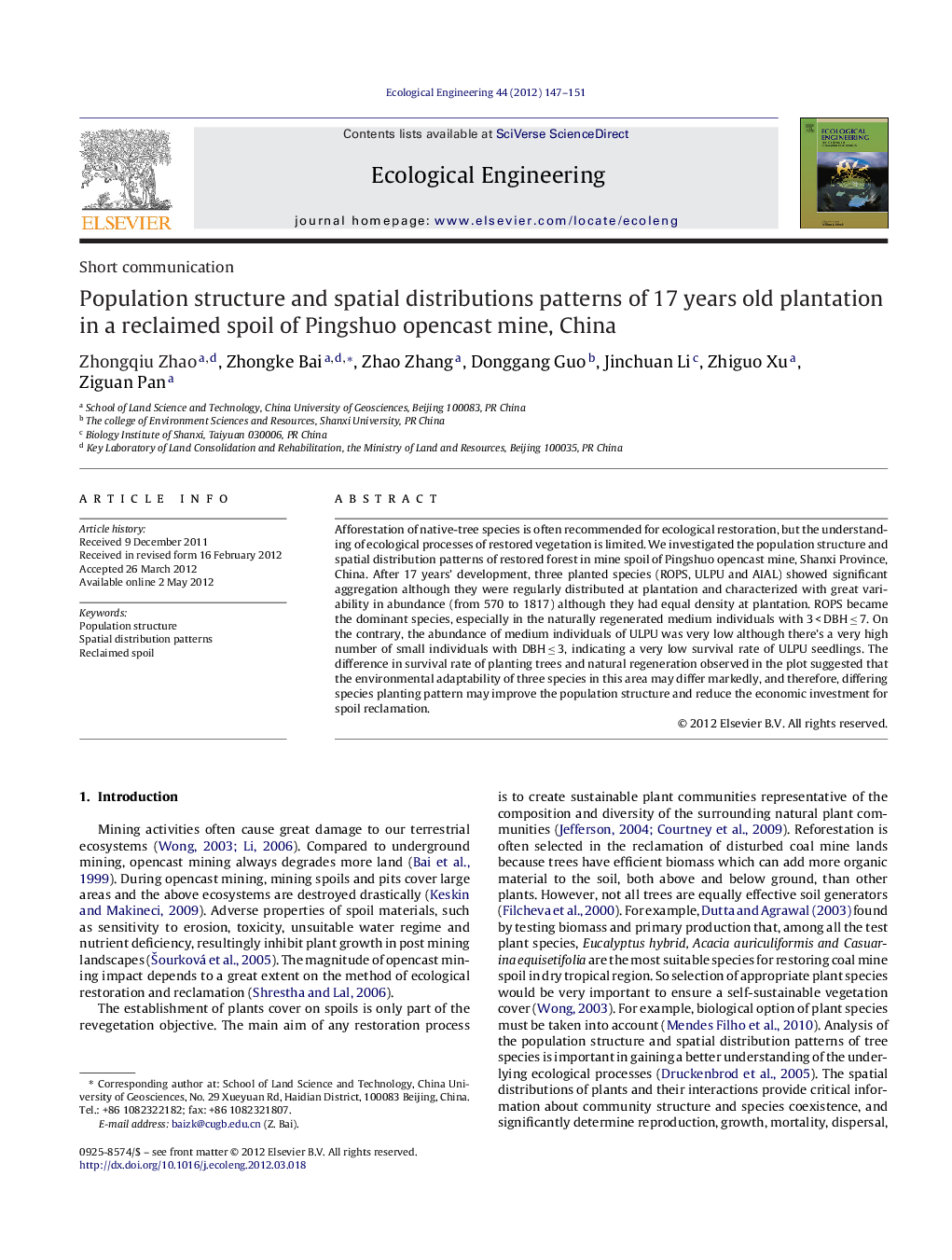| Article ID | Journal | Published Year | Pages | File Type |
|---|---|---|---|---|
| 6302683 | Ecological Engineering | 2012 | 5 Pages |
Afforestation of native-tree species is often recommended for ecological restoration, but the understanding of ecological processes of restored vegetation is limited. We investigated the population structure and spatial distribution patterns of restored forest in mine spoil of Pingshuo opencast mine, Shanxi Province, China. After 17 years' development, three planted species (ROPS, ULPU and AIAL) showed significant aggregation although they were regularly distributed at plantation and characterized with great variability in abundance (from 570 to 1817) although they had equal density at plantation. ROPS became the dominant species, especially in the naturally regenerated medium individuals with 3 < DBH â¤Â 7. On the contrary, the abundance of medium individuals of ULPU was very low although there's a very high number of small individuals with DBH â¤Â 3, indicating a very low survival rate of ULPU seedlings. The difference in survival rate of planting trees and natural regeneration observed in the plot suggested that the environmental adaptability of three species in this area may differ markedly, and therefore, differing species planting pattern may improve the population structure and reduce the economic investment for spoil reclamation.
